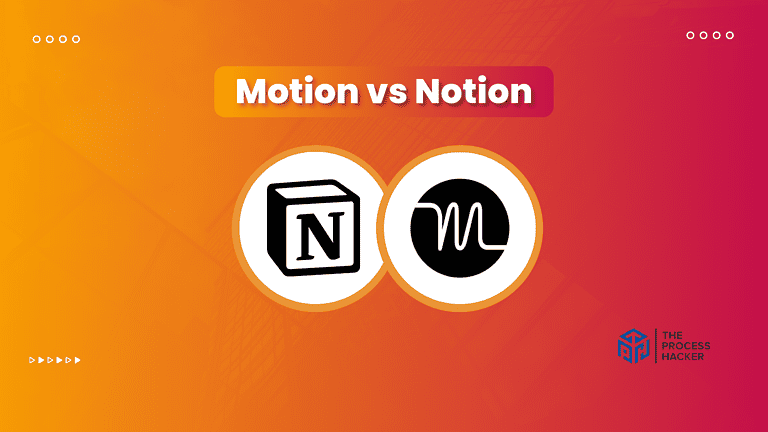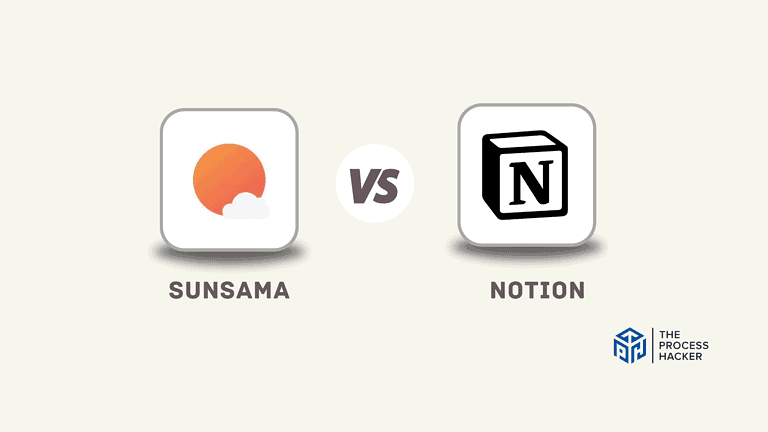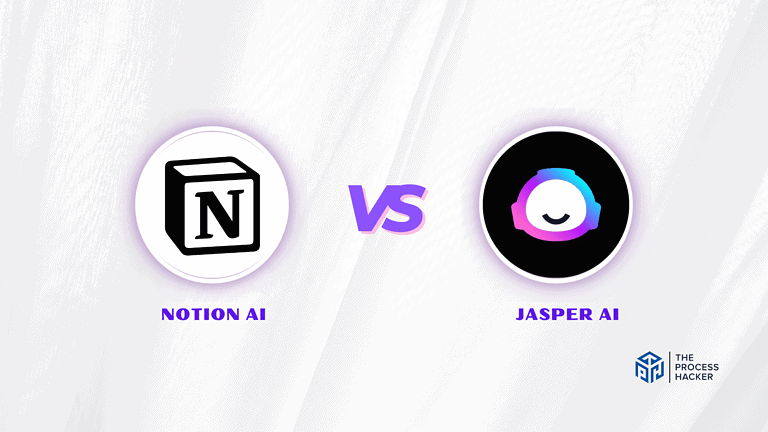SMART Goals: How to Set Goals and Achieve Them
“Setting goals is the first step in making the invisible into the visible.”
Tony Robbins is an American author, public speaker, life coach, and philanthropist.
Do you have many great ideas but never have the time or eagerness to act on them?
Maybe you are trying to cultivate skills or passions, but it seems like you have not made any progress in the last few years. Or perhaps you have big dreams for your life but have no clue how to move forward on them. In this post, we will show you how to set SMART goals so you can finally start taking action.
Many people have “great ideas,” but most people never take action on their “great ideas.” Maybe it seems like we got a lot of work done or are working on many different projects, but it didn’t amount to any real progress in the grand scheme of things. We didn’t move the needle at all.
Instead, we can set SMART Goals to turn our ideas into actionable projects. SMART Goals help us clarify our intentions with purpose, plan our time and resources wisely, and take action on the goals we want to accomplish in life.
What is a SMART Goal?

In Attitude is Everything, Paul J. Meyer first defined the concept of SMART when setting goals. Meyer described each of the characteristics of SMART: Specific, Measurable, Attainable, Relevant, and Time-based.
Since its publication in 2003, the acronym has been widely used in many areas, including project management, employee performance, and self-development. SMART Goals are designed to guide us in creating goals that are clear, focused, and attainable.
What are the SMARTEST Goals?
If you aim for an average life, stick to SMART goals, which only cover the “what” of your actions:
What = the consequence, effect, or outcome you want to achieve.
Yes, you become focused on the results but have no “Why” to back it up.
Further, one of my mentors, Mani Vaya, founder of Focus Blocks, would say: “If you want to live an average or mediocre life, you should use SMART Goals.” The result is that you can set Relevant, attainable goals and check the boxes, but you will only live a mediocre life.
However, Mani says, “If you want to do great things in your life, you need SMARTEST Goals.” The SMARTEST Goals provide the WHY to WHAT you are doing:
Why = the compelling reason for wanting to achieve your result.
Therefore, you need to make your goals the SMARTEST Goals if you want to live a remarkable life of both Results (SMART) and Meaning (EST)!
Why is it Important to have the SMARTEST goals?
Setting goals is essential for personal and professional growth, but having SMART goals is not enough. Many people set “achievable” and “relevant” goals but lack the true motivation and purpose behind them. This can lead to a sense of unfulfillment and a feeling of just going through the motions in life.
The SMARTEST goal framework takes things a step further by incorporating the WHY into your goals. This means identifying the deep, underlying reason for wanting to achieve your goal. When you have a strong WHY, you are more likely to stay motivated and committed throughout the process.
In addition, having a clear WHY can also give your goal more meaning and purpose. It allows you to connect with your values and passions, making the journey towards achieving your goal much more fulfilling and meaningful.
So, the next time you set a goal for yourself, make sure to ask yourself WHY:
- What is the deeper reason behind wanting to achieve this goal?
- How will it align with your values and passions?
This will not only improve your chances of success but also make the journey towards achieving your goal more enjoyable and purposeful.
Remember, a strong WHY can be the driving force behind achieving true personal growth and fulfillment. So don’t just set SMART goals; set SMARTEST goals by incorporating your WHY into them.
What are the Components of the SMARTEST goals?
When setting goals, it’s essential to ensure they’re SMART—specific, measurable, achievable, relevant, and time-bound. But when you add the extra components of SMARTEST goals, you create an even more effective framework for achieving success.
Specific: Is it simple and concise?
A Specific Goal helps you know exactly what you need to do to move forward with the idea.
Specific goals set us up for success. If we make our goals too complicated, we may hesitate or get stuck thinking about what we have to do. Over time, it will be tough for us to remember complex goals.
When setting SMART goals, you want to read them and understand what you have to do to move forward. Additionally, break down the complicated goals into specific, smaller goals. This will make them much more manageable to take action on.
Example
You are preparing dinner for the family, which includes many smaller steps. You should divide out the tasks within the project of making dinner within your notebook or to-do application.
This will make it easy to remember and avoid getting way too detailed:
- Avoid: “Make dinner for the family, including finding a recipe, buying the ingredients, prepping the ingredients, cooking the food, and serving it by dinner time.”
- Instead:
- “Make dinner for our family.”
- “Find a recipe online.”
- “Buy the following ingredients: …”
- “Prep the ingredients for the recipe.”
- “Start cooking to serve by dinner time.”
Ask Yourself
- Is the goal easy to understand?
- What do I want to accomplish?
- Who is involved?
- Where is it located?
Measurable: What does progress mean?
A Measurable Goal tells you clearly what progress means,” qualitatively or quantitatively.
Measurable goals show us the amount of progress we are making toward them. Management expert Peter Drucker has said, “What gets measured gets managed.” Metrics help you figure out where you are in relation to your goal, identify potential issues, and predict future progress.
When you set SMART goals, you need to measure progress toward your desired end state. You can establish metrics, milestones, or a timeline to mark your progress toward the goal.
Example
You run a marketing business and are trying to grow it to replace your 9-5 job. To accomplish this goal, you need to increase the number of clients and revenue coming into the business.
You want to avoid being vague and stick to numbers to mark your progress:
- Avoid:
- “Want to improve or be better.”
- “Want to get more clients.”
- Instead:
- “Grow the business to earn revenue of $10,000 per month.”
- “Sell two additional clients for $2000 per month.”
Ask Yourself
- How much?
- How many?
- What does progress mean?
- How will I know that my goal is accomplished?
Actionable: What actions do you have to take?
An Actionable Goal tells you what action needs to be taken to accomplish that goal.
Actionable goals should inspire us to take action. Many people have great ideas; however, the key to moving forward in your life or business is to create goals that you can take action on. When you take consistent action, you will gain traction on your vision.
When setting your SMART Goals, you should start the goal phrasing with an action verb. Think through the actions that will culminate in you accomplishing that goal. Avoid being vague with the actions by just writing nouns to describe your goal.
Example
You are responsible for writing a weekly email newsletter for the employees in your company. You want to make this a recurring task in our notebook or to-do list application. You should start with the verb “write” or “email” and avoid the common trap of just listing the noun:
- Avoid:
- “Weekly Newsletter.”
- “Company Newsletter.”
- Instead:
- “Write the weekly newsletter.”
- “Email out the weekly newsletter.”
Ask Yourself
- Is it the right time to work on this goal?
- What actions do you need to take?
- What can I do can I take today? In a week? In a month?
Relevant: Do you have the skills and experience?
A Relevant Goal shows you that the endpoint is achievable with the resources you have available.
Relevant goals ground us in our reality. In the blog post “Your Five Most Precious Resources,” the Minimalists state that a “simple life involves, perhaps above anything else, the deliberate use of resources.” Specifically, they refer to the five STEAM resources: Skills, Time, Energy, Attention, and Money. We need to be intentional about how we use those resources.
When you set goals, you need to remember that you have a limited amount of resources. Many of us are guilty of making our goals relevant by underestimating how much time or money is required. You want to avoid overloading yourself with too much to do, which can cause you to feel overwhelmed, stressed, or sleep-deprived.
Example
Let’s say your dream is to create a stunning website for your business.
- Avoid: “I’m going to build an incredible website, learn all the coding from scratch, and do it in two weeks!”
This goal might sound exciting, but does it align with your current reality? If you’ve never coded before, the learning curve is steep, and two weeks isn’t realistic.
- Instead: “I’m going to research website builders and find one that fits my needs. I’ll create a simple website with essential pages in the next month. If I have time, I’ll learn a few basic coding skills to customize it further.”
This goal acknowledges your starting point. You’re focusing on achievable steps and leaving room for growth. It’s a roadmap to success that you can actually follow.
Ask Yourself
- Is the goal achievable?
- How can I accomplish this goal?
- What resources (Skills, Money, Energy, Attention, and Money) are required?
- What constraints are involved?
Time-bound: By when will you achieve it?
A Time-bound Goal gives you a clear deadline and holds you accountable for completing it within a specific timeframe.
Let’s talk about deadlines. A goal without a deadline is like a ship without a rudder – it might drift aimlessly, never reaching its destination. Setting a specific timeframe creates a sense of urgency and helps you stay on track.
Time constraints are essential when setting goals. A common pitfall is crafting goals that underestimate the time necessary to accomplish them. This can lead to frustration and a lack of motivation when the deadline approaches and the goal is not yet achieved.
Example
Instead of saying, “I want to increase website traffic,” make it timebound: “I will increase website traffic by 20% within the next three months.” This simple addition transforms your goal into a concrete objective with a measurable outcome:
- Avoid:
- Vague timelines: Phrases like “eventually” or “someday” leave too much room for procrastination.
- Unrealistic deadlines: Setting overly ambitious timelines can lead to discouragement if you don’t meet them.
- Instead:
- Set specific dates or timeframes: “By December 31st” or “within the next quarter” provide clear targets.
- Break down larger goals: If a goal seems daunting, divide it into smaller milestones with their own deadlines.
Ask Yourself
- When do I realistically want to achieve this goal?
- What smaller steps can I take, and when can I complete each one?
- What resources or support do I need to meet this deadline?
Exciting: Does it get you out of bed daily?
An Exciting Goal inspires and motivates you every day. It’s the kind of goal that makes you jump out of bed in the morning, eager to get started. Exciting goals are important because they keep us focused and driven even when things get tough.
When setting your goals, ask yourself what truly excites you. What do you dream about? What would make you feel fulfilled and accomplished? These are the types of goals that will push you toward success and give you a sense of purpose.
However, it’s also important to remember that not all exciting goals have to be big or grandiose. Sometimes, the most exciting goals are small ones that bring joy and fulfillment to our daily lives.
Example
Imagine you want to improve your knowledge of the Spanish language. Instead of setting a vague goal like “learn Spanish,” you can set an exciting goal: “Achieve intermediate proficiency in Spanish so I can enjoy my trip to Spain next year without feeling lost.”
- Avoid: Setting goals that are not exciting, which can lead to procrastination and a decrease in motivation.
- Instead: Define your objectives with excitement and passion. By setting exciting goals, you are more likely to stay motivated and committed to achieving them.
Ask Yourself
- Is this goal something that genuinely excites me? Ensure that your goal aligns with your personal or professional passions.
- How will achieving this goal improve my daily life or career? Visualize the benefits to keep your motivation high.
- Do I have a clear plan to reach this goal within the set timeframe? Plan detailed steps and set mini-milestones to track your progress effectively.
Summoning: Is it aligned with your mission and values?
A Summoning Goal provides you with a quick understanding of why it is important to complete that goal.
Summoning goals gives us purpose. In the book Start With Why, Simon Sinek tells us that great leaders communicate why they are doing something before discussing how or what they actually do.
Note that smaller goals may not be meaningful to us, but they should contribute to the bigger picture of our lives or businesses. You should check out his TED talk.
When setting SMART goals for yourself, you should start by explaining why you are pursuing those goals. You should make your goals significant to yourself. This will allow you to read them, understand why they are essential to you, and move forward.
Example
Imagine your business is committed to sustainability. A goal like “increase profits by 15%” might be achievable, but it doesn’t necessarily align with your mission. Instead, you could set a goal like “reduce carbon footprint by 20% while maintaining profitability.”
This goal not only focuses on financial success but also aligns with your why:
- Avoid: Setting goals that clash with your personal or professional ethics or that may lead you away from your core interests and values. For instance, if transparency and open communication are pivotal to your ethos, adopting strategies that rely on obfuscation or secrecy can create internal conflict and diminish your passion for the project.
- Instead: Create goals that enhance and reflect your values. If integrity and customer satisfaction are among your top priorities, consider goals that involve improving customer service processes or adopting more transparent communication practices within your team.
Ask Yourself
- Is the goal important to you?
- Why is this goal important to you?
- Are you the right person to work on this goal?
- Does the goal fit within the larger context of your life?
Testing: Does it bring out your best work?
A Testing Goal is a stretch goal. It pushes you out of your comfort zone and challenges you to reach new heights. It stretches your skills and abilities, ultimately leading to personal growth and development.
In “The 10X Rule,” Grant Cardone emphasizes the importance of setting high goals and taking massive action to achieve them. He argues that by setting big goals, we are forced to think outside the box and develop creative solutions that we wouldn’t have thought of otherwise.
As such, you show dedication and determination to continuously improve and strive for excellence in your work. It also demonstrates a commitment to delivering high-quality, thoroughly tested, and refined results.
Example
Imagine you’re a blogger. Instead of setting a goal like “write one blog per week,” you could set a testing goal: “Write 10 blogs per week.” This pushes you to produce more content but also challenges you to produce more blog posts. By constantly using AI tools and refining your writing, you will eventually be pushed to hit this stretch target.
Setting a Testing Goal is about continuous self-improvement and pushing yourself to be the best version of yourself:
- Avoid: “Speak on stage this year.”
- Instead: “Get a standing ovation in front of an audience of 1,000 people.”
Ask Yourself
- Does this goal push me out of my comfort zone?
- What new skills or knowledge will I gain by achieving this goal?
How to Set SMART Goals?
Setting goals is a robust process, and using the SMART goal framework helps ensure that your objectives are clear and reachable. Each goal should follow the SMART criteria—Specific, Measurable, Achievable, Relevant, and Time-bound.
Here’s how to effectively apply the SMART framework to set and achieve your goals.”
#1) Brainstorm Everything that You Want to do
Begin by unleashing your creativity to list all possible objectives—no matter the scope. Write down everything that excites you, challenges you, or needs completion.
This initial phase is about quantity over quality, where you explore the full range of potential SMART goals without restriction. You’ll refine these ideas in subsequent steps.
#2) Combine, Delete, and Prioritize to Get 3-7 Goals
Review your list critically. Combine similar objectives, discard those that no longer seem practical, and prioritize based on alignment with your long-term vision.
Narrowing your focus to three to seven goals ensures your plan remains manageable while covering diverse areas of personal and professional growth. This process helps create SMART objectives that are finely tuned to your ambitions.
#3) Frame Them as SMART goals with Assigned Due Dates
Transform your selected goals into structured SMART objectives. This involves defining clear success markers for each goal.
This means establishing methods to measure progress, ensuring they are achievable within your available resources, affirming their relevance to your broader aims, and, crucially, setting a target date for each. This approach encapsulates the SMART goal framework, ensuring each objective is time-bound and poised for success.
#4) Track Progress and Hold Yourself Accountable
Implement a system to monitor your advancements. Utilize tracking apps, regular self-reviews, or accountability partnerships to maintain diligence.
This setup is critical in keeping you accountable and responsive to your goal progression. Regular assessments allow you to celebrate achievements, address challenges, and recalibrate your strategies as needed, embodying the essence of SMART criteria.
By adhering to these steps and consistently applying the SMART acronym, you ensure that your goals are not just aspirations but achievable milestones that drive significant personal and professional development. Each smart objective is a step toward realizing your larger ambitions, making every effort count within the defined time frame.
This disciplined approach to goal-setting, using the smart goal framework and smarter goals methodology, ensures that you always progress toward your highest potential.
Note: Set Goals for Relevant Time Periods
Depending on what works best for you, you can create goals for various periods of time: daily, weekly, monthly, quarterly, or annually. For myself, I do the following:
- Daily Goals: Spend 10 minutes the previous night to write my SMART goals for the next day in my Todoist app.
- Weekly Goals: Spend 1 hour on Sunday night to plan out my goals and focuses for the upcoming week in my Google Calendar.
- Quarter Goals: Spend one workday before the start of the quarter planning out what to do for the next quarter in Google Docs.
Remember that if you try to do everything, then you will not make any progress toward any specific goal. Thus, I recommend establishing about three to seven goals per time period, with less being more.
Final Thoughts on Smart Goal Setting
Setting SMART goals is the key to achieving success and making your dreams a reality. By following the specific guidelines of specificity, measurability, actionability, relevance, and time, you can create a roadmap for yourself that leads straight to victory.
Then, take it to the next level by making them the SMARTEST goals. This means adding in elements of excitement, summoning your best self, and testing for when you will check in on your progress. These extra steps will provide the meaning behind your goals to keep you motivated and focused.
Breaking down your goals into smaller, actionable steps may seem daunting at first, but trust me when I say it will pay off in the long run. Remember to stay true to yourself and your passions when setting your goals—after all, they are what drive us and make life worth living.
And don’t forget to celebrate every milestone along the way – whether big or small, each step towards your goal is an accomplishment worth recognizing and celebrating. As poet Robert Frost once said, “The only way around is through” – so go out there and achieve your SMARTEST goals with determination and resilience.
Remember: you can do great things, and nothing can stop you from reaching your full potential! So go forth and conquer with confidence!







